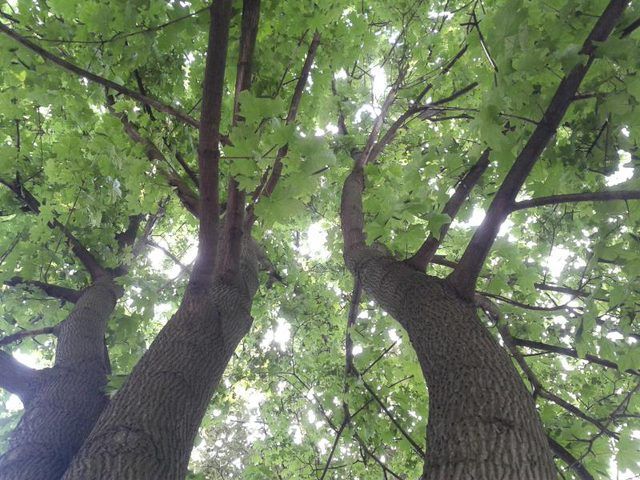Bulbs
Flower Basics
Flower Beds & Specialty Gardens
Flower Garden
Garden Furniture
Garden Gnomes
Garden Seeds
Garden Sheds
Garden Statues
Garden Tools & Supplies
Gardening Basics
Green & Organic
Groundcovers & Vines
Growing Annuals
Growing Basil
Growing Beans
Growing Berries
Growing Blueberries
Growing Cactus
Growing Corn
Growing Cotton
Growing Edibles
Growing Flowers
Growing Garlic
Growing Grapes
Growing Grass
Growing Herbs
Growing Jasmine
Growing Mint
Growing Mushrooms
Orchids
Growing Peanuts
Growing Perennials
Growing Plants
Growing Rosemary
Growing Roses
Growing Strawberries
Growing Sunflowers
Growing Thyme
Growing Tomatoes
Growing Tulips
Growing Vegetables
Herb Basics
Herb Garden
Indoor Growing
Landscaping Basics
Landscaping Patios
Landscaping Plants
Landscaping Shrubs
Landscaping Trees
Landscaping Walks & Pathways
Lawn Basics
Lawn Maintenance
Lawn Mowers
Lawn Ornaments
Lawn Planting
Lawn Tools
Outdoor Growing
Overall Landscape Planning
Pests, Weeds & Problems
Plant Basics
Rock Garden
Rose Garden
Shrubs
Soil
Specialty Gardens
Trees
Vegetable Garden
Yard Maintenance
How to Prune Maple Trees
How to Prune Maple Trees. Two pruning styles are needed for the two categories of maples. The first category includes large, native American trees, capable of growing 80 feet tall. Valued as shade trees and street trees, those maples need early pruning to shape their basic growth. The second category includes Japanese maples (Acer palmatum), which...

Two pruning styles are needed for the two categories of maples. The first category includes large, native American trees, capable of growing 80 feet tall. Valued as shade trees and street trees, those maples need early pruning to shape their basic growth. The second category includes Japanese maples (Acer palmatum), which have a smaller stature and more delicate growth. They need restrained pruning that is suited to the particular horticultural cultivar.
Using the Right Techniques
Pruning tools should be wiped with rubbing alcohol before they are used for pruning, cleaned again frequently during pruning and cleaned before they are stored. Disinfecting them with rubbing alcohol deters the spread of plant diseases. For any kind of maple tree, remove broken, dead or diseased branches as well as branches that cross or rub against each other. Remove a large maple's branches that grow vertically in relation to the tree's trunk because those branches are weaker and more apt to break than other limbs. Maple bark is thin, but bark tears can be prevented. If a branch is heavy or large, then remove it in three steps. About 1 foot from the where the branch joins the trunk, cut from the branch's underside until the cut is about two-thirds of the way through the branch. Then cut from the top of the branch to meet the first cut. As the final step, cut close to the trunk, angling it at 45 degrees along the branch's swollen basal area, which is called the branch collar, so that the branch stump will point somewhat toward the sky.
Timing Trimming
When a maple tree of a large-growing species is about 2 years old, select a vertically straight, strong branch to become the trunk. Prune away extra branches. As the tree grows, choose strong horizontal branches as the main scaffolding branches that become the tree's framework. Those branches should be evenly spaced, grow outwardly and extend in different directions from the trunk. Winter is a good time for maintenance pruning of maples because their branching structure is clearly visible then. Also, maples bleed sap from pruning wounds when cut in early spring before their buds leaf out, but the bleeding does not harm large trees. Pruning maples in late spring after their leaves emerge reduces bleeding. Avoid late-winter and early-spring pruning in Japanese maples because their bleeding can lead to fungal infections.
Pruning Tall Species
Sugar maple (Acer saccharum), which is hardy in U.S. Department of Agriculture plant hardiness zones 3 through 8a, needs relatively little pruning. It grows about 1 foot each year and naturally develops wide-angle branch crotches or forks. In contrast, silver maple (Acer saccharinum), hardy in USDA zones 3 through 9, is an aggressive grower. Its roots can raise sidewalks and its fast growth leads to softer wood, but silver maple is valued for providing quick shade. It needs frequent pruning to develop a sturdy basic structure. Remove the sprouts that come from a silver maple tree's base and branches. Red maple, also called swamp maple (Acer rubrum), hardy in USDA zones 4 through 9, develops upright growth that penetrates the canopy and needs to be removed.
Pruning Japanese Maples
The finely dissected and at times lacy leaves of Japanese maples combine with picturesque branching habits and interesting bark to give an elegant ambiance to the landscape. Hardy in USDA zones 5b through 8, Japanese maples can be single- or multi-trunked. The trees grow 15 to 25 feet high and are suitable for containers, with many cultivars varying shape and leaf color. Don't be in a hurry to prune a Japanese maple. Begin with gentle shaping when the tree is 2 to 3 years old. Pruning the tree gradually and minimally may be best, studying the tree as it grows to maintain its natural shape. Depending on the tree's size and branch thickness, you could use your fingers, scissors or fine-tipped snips in addition to pruners when trimming.